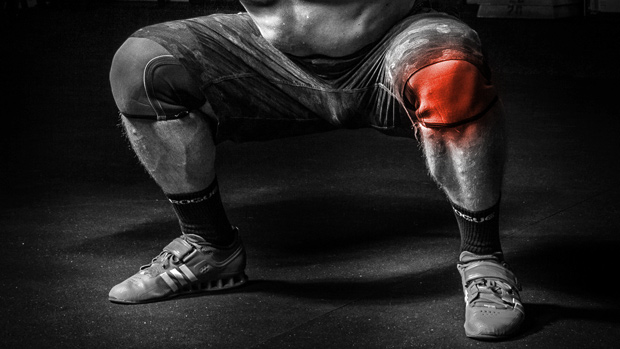Technique Flaws Hold You Back
Are you trying to squat heavier? Do you believe you need to work harder and get stronger? This might be partially right, but you might be missing something.
Too many lifters are trying to get stronger and stronger, but it's not their strength levels that are holding them back. Rather, it's their squatting technique that has suffered over time and didn't get enough attention. Flaws in your squat technique will hold you back from progressing. A few possible technical flaws:
- Too much forward lean with the upper body during the descent and not being able to achieve full depth.
- Weight shifts towards the front of the foot in the bottom position and the force can't be efficiently transferred into the ground.
- The hip comes up first in the ascent and distributes the load towards the posterior chain.
How to Improve Technique
Overhead squats and front squats can improve the squatting pattern. These squat variations should be a regular part of your strength training program.
The overhead squat requires a more upright posture than the back squat and you're forced to execute the squatting pattern precisely, otherwise the bar would drop to the front or back. Have a look at the video below. You can see the high concentration level of the athlete and accurate execution.
Overhead Squat
The front squat also requires you to keep your upper body more upright. A forward lean will result in not being able to hold the bar on the front of the shoulders.
Front Squat
Mechanical Drop Sets
Mechanical drop sets are most often used to build strength and size, but they can also improve squat mechanics and technique.
In a regular drop set, weight is decreased to prolong the training set. But in a mechanical drop set you progress to a mechanically advantageous position. You're in a mechanically stronger position in a front squat as compared to an overhead squat. And you're in a mechanically stronger position in a back squat as compared to a front squat.
The 3-Squat Mechanical Drop Set
Perform 1 overhead squat, 2 front squats and 3 back squats using the same weight. Add this to a warm-up before a squat or any Olympic lifting type of movement. Keep reps low (1–2–3 reps) to avoid accumulated fatigue. There are several advantages here:
- Time efficiency. You're killing three birds with one stone.
- Linking three squatting patterns into one exercise.
- Combining three distinct movement patterns into one set will result in better technical learning than working on one movement pattern at a time.
Now, there are also some disadvantages:
- You need to be proficient in all different squat variations to maximally benefit from this drop set.
- Getting the bar from the overhead squat position to the front squat position is very difficult. As you can see in video, the athlete drops the bar and then brings it back into the rack.
How to Use This Drop Set
If you're like most lifters, you can lift much more weight in the front squat or back squat compared to the overhead squat. To maximally benefit from the 3-squat drop set, use a maximal or near-maximal load for the overhead squat (1-2 reps) for your training sets.
This is an advanced training method, so make sure you have the technical proficiency to perform the exercises safely before trying it out.





